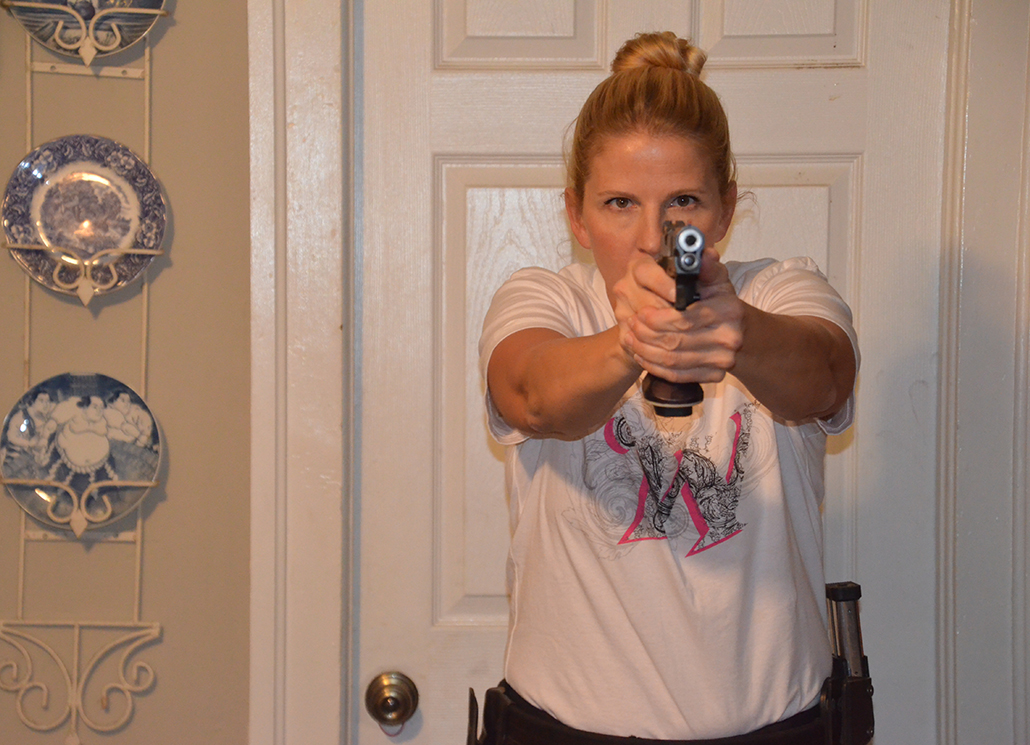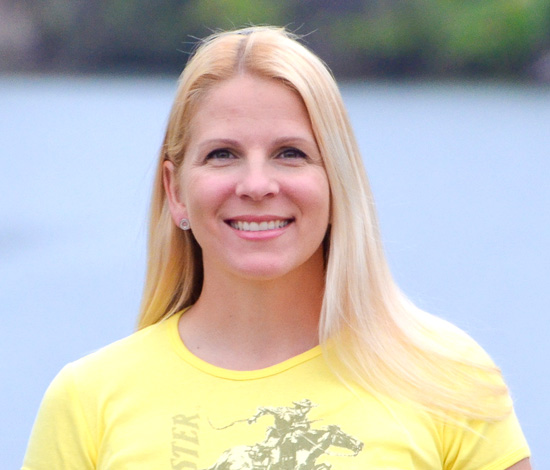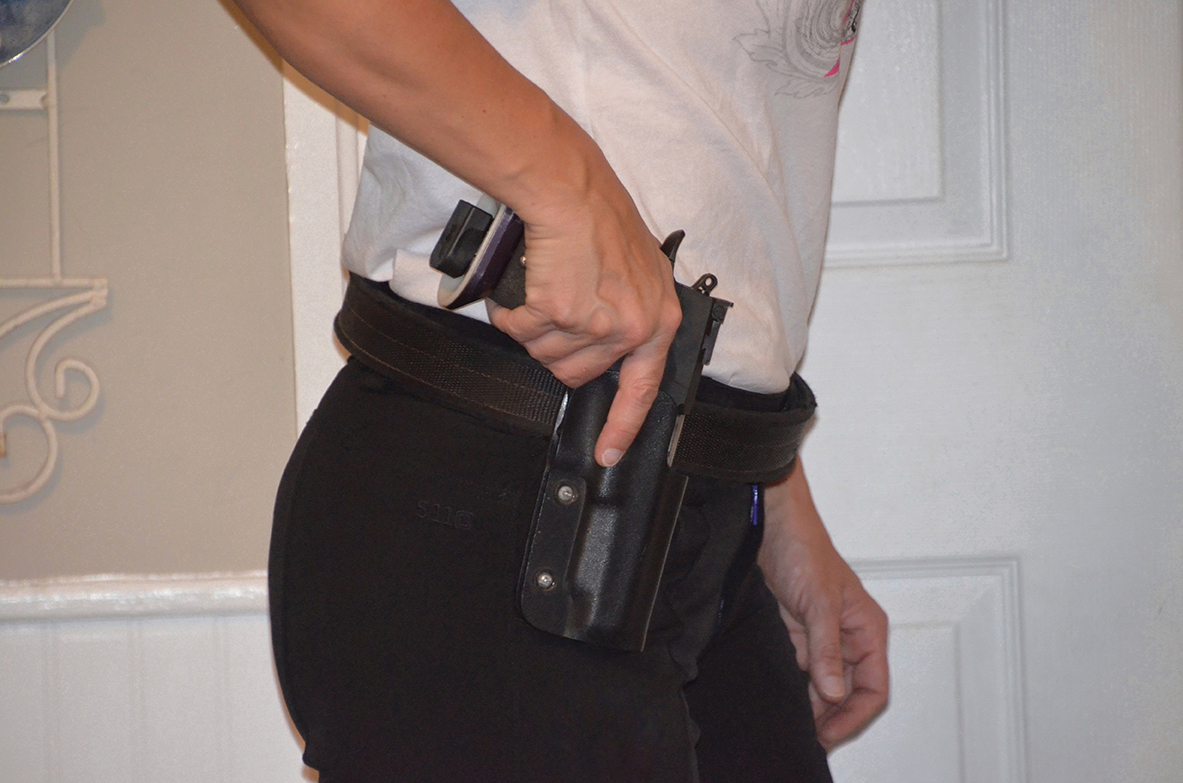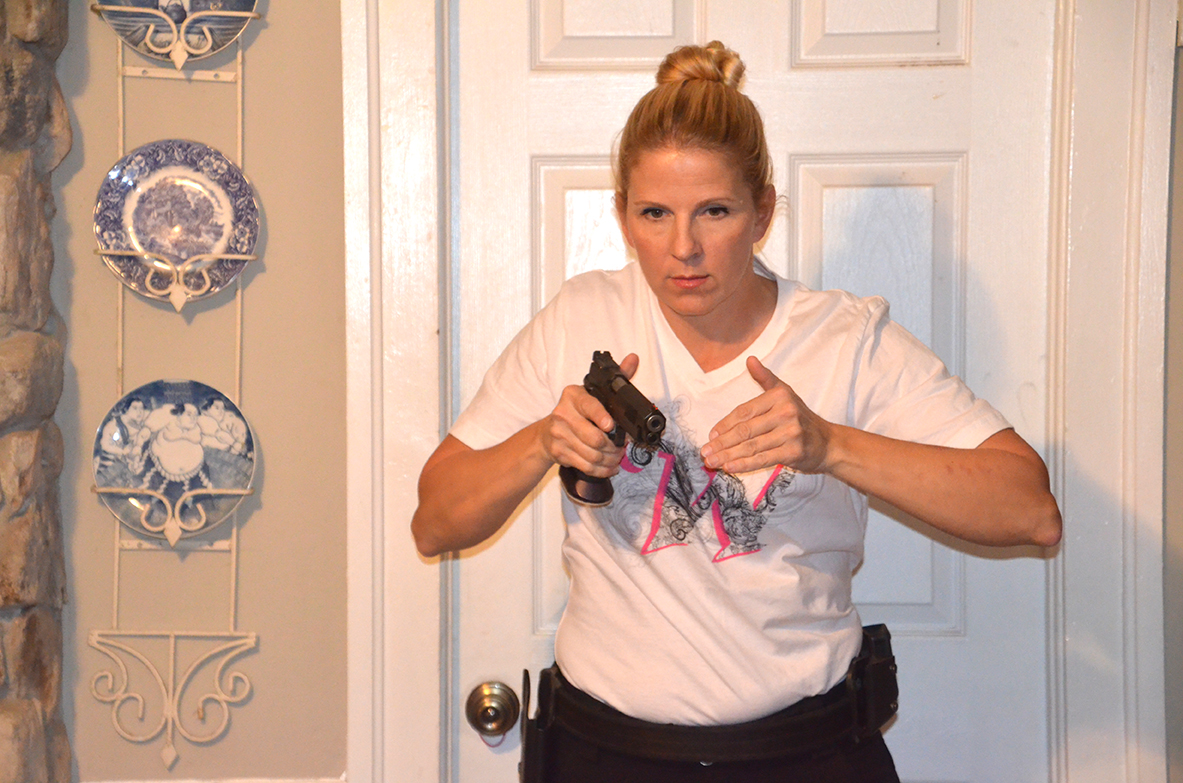Dry Fire Exercise to Help You See the Target Faster
Shooting a handgun “well” requires practice. Practice eludes a lot of people because getting to the range takes time and money. But there are ways to practice that don’t require you to leave home, or spend anything more than your own effort.
The question then becomes, home much are you willing to spend in effort? Dry fire can help even the newest shooter because they will learn safe gun handling habits, how to move with a firearm, how to change magazines, transition, “see faster” - all without the need for ammo or travelling to and from the range. So grab your empty gun, mags, holster and mag holders and let’s check out some simple dry fire exercises to help you improve your handgun shooting.

First, before you decide that you are going to dry fire, you need to set aside an area for it. You need to pick a place where you will NEVER have ammo. Some people put a target poster on the wall, some make miniature targets from paper or cardboard...it’s up to you to find something you like to work with. But consider that adage about perfect practice makes a perfect performance.
Next, pick one task and work on it. I can do an entire draw, while focusing on the way my hands come together to build my grip, but I’m doing the other parts as well. So while you have simple tasks like a draw or magazine change, don’t be afraid to pick a small part and perfect it.
It takes about 1,000 repetitions to commit something to muscle memory. So you would need to draw 1,000 times to establish that muscle memory. To get the muscles programmed takes time and repetition. Repeating a movement at a reasonable speed until you are performing the task correctly should be your goal - speed will come as your muscles remember.
One of the things that speeds up as we become better at executing the fundamentals is our ability to see. There is a “slow-motion” feeling some shooters describe when they have a good run. It happens because they can let their subconscious mind take over once they have muscle memory built up and don’t need to consciously focus on the small things.
Here are the 3 biggest places I think you will benefit from dry fire:
Task 1 - Draw. For someone brand new to competitive shooting, practicing the draw is important. We covered stance and grip in a previous blog post, so be sure to build a good stance and establish proper grip. Do this at what I would call “programming speed” (not slow-motion, but completing the steps with precision). When you practice your draw, you teach your muscles where the gun is without having to look for it, and to feel where your palms meet as you build your grip and press the gun out and begin aligning the sights. The steps of a draw are sometimes broken down into a 1, 2, 3 sequence. I would describe them as more a chain of actions that should be fluid; your hands move from start position one to the gun, the other coming up to meet the hand with the gun, and as they both meet and build the grip, you press the gun out to align your sights. Once your sights are on the target, you can start taking up the slack and squeeze the trigger. There are many smaller parts of this. Don’t turtle your shoulders or have large movements in your upper body as you draw. Don’t thrust the gun forward so hard you take more time to make it stop and let the sight settle...but for now, just focus on clean and smooth.
Task 2 - Transition. Building from the draw, we can draw, dry firing a shot and then transition to a new “target”. Focus on stance, grip, and properly aligning the sights as the gun moves into the field of view are important. With this task, we want to think about seeing the front sight and breaking the trigger without disturbing the sights. Then, move or transitioning to a new target. Eyes leave the target and the gun follows. For very large transitions, the head might snap to the new direction. As we get better and better, our eyes learn to call the shot and we do what shooters refer to as “driving the gun” to the next target. With live fire, that means we accept the recoil and move to the next target. As we get better and better, we will learn how long we have to essentially follow through. But right now, we’re really just programming the basics: Draw, pull the trigger without moving the sights, move the eyes as fast as you can and the gun follows.
Task 3 - Magazine Change. I tend to practice a magazine changes in conjunction with a draw, dry firing a shot and then changing the mag and pressing the gun back out onto a “target.” I will focus on getting the mag changed as fast as possible. Meaning, the gun should still be mostly vertical as I hit the mag release so the mag drops free. Once I’ve built up some time doing static mag changes, I can practice moving mag changes. In a contest of time, nobody wants to do a standing reload. You want to do them while moving, but they should be completed in the first few steps. Getting the basics down while standing still is advisable. Muscles will learn where to reach for the magazine and you will learn where to look. For example, I don’t see myself hitting the mag release or grabbing my mag, but I do look at my mag well as I shove the new mag in. It’s more difficult to pay attention to those things while moving, so establishing a basic feel for the mechanics while standing still is advisable. If you chose to practice this moving, always be sure your finger is off the trigger. Some people lay their finger alongside the frame. The benefit to that versus just holding your finger off and in the air is that when we fall, slip, trip...our basic human reaction is to tense up. So if your finger is unable to tense up because it’s resting on the frame, it can’t tense up onto the trigger.
These are three simple tasks to practice in dry fire.
So carve out a few minutes every week to dry fire, and follow Winchester’s social media channels for more hunting and shooting tips and updates on Winchester supported events and promotions on Facebook, You Tube, Instagram and Twitter.






